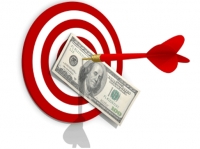Digital marketing is an ever-growing industry. It seems that every day there is new terms and acronyms to learn. Even if you don’t interact with online marketing daily it is useful to understand terms to communicate with companies such as Blue Sand Group your needs and concerns. This weeks newsletter will help you understand the terms the SEO experts at Blue Sand Group use daily.
To an outsider these terms may sound like complicated jargon, but knowing these terms can help communicate better with specialists. This can make a difference between between the first page on Google and the deep dark third pages.
SEO
Search Engine Optimization (SEO) is everything involved in getting users to click on your site from search engines such as Google or Bing. Google still dominates as the most used search engine, this gives Google the power to constantly adjust their ranking algorithm. SEO involves improving your sites readability to online bots. This is done by adding keywords, improving on-page SEO, off-page SEO, improving links, and adding quality content.
SEM
Search Engine Marketing (SEM) is perfectly paired with SEO. The main difference between SEM and SEO is that SEM is a paid advertisement that is placed on the search engine page or placed on pages potential vistors may be on. Whenever you use Google you are given around ten organic website listings. The first three are almost always advertisements paid for using SEM and can be identified by the “ad” symbol. SEM is a variety of activities including: Pay-Per-Click (PPC), Paid Search Ads, Cost-Per-Click (CPC), and Cost-Per-Thousand-Impressions (CPM).
PPC
Pay-Per-Click (PPC) is the cornerstone of search engine marketing (SEM). PPC is a model of online advertising where advertisers are able to set a price on each click from users. To be more specific PPC is the ad that a user clicks on.
CPC
Closely related to PPC is Cost-Per-Click (CPC). This is the cost that is given to a particular keyword for each click it receives. While PPC is the ad; CPC is the actual price for a user to click on the ad. Google created a intricate formula that creates this cost; it involves having a high bid, ad rank score, and quality score for your website.
CTR
Click-Through-Rate (CTR) is a ratio that gives an indication of the engagement of an advertisement, page or email. CTR is the amount of people that were willing to open a link. Click through rate is carefully calculated by: CTR = ((Clicks/Impressions) x 100) The higher percentage you receive the more engagement.
CRO
Conversion-Rate-Optimization (CRO) is the rate which a user completes a site goal. Site goals can come in a variety of forms such as: requesting a quote, purchasing a product, signing up for emails, or subscribing to a service. CRO is all about improving the conversion rate. Most analytic services can set up a conversion rate, in summary a conversion rate is calculated by taking the number of completed goals and dividing it by the number of sessions.
CTA
Call-To-Action (CTA) is simply what you want your visitors to do after viewing and ad. CTA’s can come in the form of “Read More”, “Donate Now”, or “Watch Video”. These often come in the form of on site or email button links that stand out to the users.
KPI’s
Key Performance indicators are an extremely important part to measuring any type of the online campaign. KPI’s are directly related to the goals or objectives of the campaign. Examples include: Organic traffic, domain authority, bounce rate, social media engagement, followers, and impressions. KPI’s are relevant in all areas of business from supply chain, customer service, retail, finance and obviously marketing.
If these acronyms are still hurting your brain, but you know they are necessary for your business to improve, contact BSG. We are happy to assist in all areas of digital marketing.

 800-303-8803
800-303-8803





